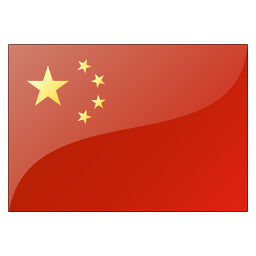



An easy half-hour metro ride will take day-trippers from Guǎngzhōu to this city. Fóshān (佛山; literally ‘Buddha Hill’) was famous for its ceramics in the Ming dynasty. Today, it’s better known as the birthplace of two kung fu icons, Wong Fei Hung and Ip Man (Bruce Lee's master), and the Wing Chun style of kung fu developed here.

North of Myanmar and Laos, Xishuangbanna (西双版纳, Xīshuāngbǎnnà) is the Chinese approximation of the original Thai name of Sip Sawng Panna (12 Rice-Growing Districts). Better known as Bǎnnà, the area has become China’s mini-Thailand, attracting tourists looking for sunshine, water-splashing festivals and jungle treks. Xishuangbanna Dai Autonomous Prefecture, as it is known officially, is subdivided into the three counties of Jinghong, Menghai and Mengla.

Dali Old Town (大理古城, Dàlǐ Gǔchéng), the original backpacker hang-out in Yunnan, was once the place to chill, with its stunning location sandwiched between mountains and Erhai Lake. Loafing here for a couple of weeks was once an essential part of the Yunnan experience.

Once the terminus of the Silk Road and a gathering place of cultures and religions, as well as being home to emperors, courtesans, poets, monks, merchants and warriors, the glory days of Xi'an (西安, Xī’ān; pronounced 'see-an') may have ended in the early 10th century, but a considerable amount of ancient Chang’an, the former city, survives behind the often roaring, modern metropolis . Xi'an’s Ming-era city walls remain intact, vendors of all descriptions still crowd the narrow lanes of the warren-like Muslim Quarter, and there are enough places of interest to keep even the most amateur historian riveted.

It's Hángzhōu, the handsome capital city, that lands Zhèjiāng (浙江) on many a traveller's itinerary. Home to picture-perfect landscapes of classical Chinese beauty (and just a short train ride from Shànghǎi), Hángzhōu is the obvious highlight. Yet the province offers so much more. There are water towns with spiderweb networks of canals and restored Ming and Qing dynasty merchants' homes (Wūzhèn and Nánxún), also in easy striking distance. Among the thousands of islands dotting a ragged and fragmented shoreline is the island of Pǔtuóshān, one of China's four most important Buddhist pilgrimage sites. More intrepid travellers can head west, where ancient villages retain their traditional architecture and bucolic charms. Meanwhile travellers looking for the opposite of intrepid can hole up in one of the stylish resorts nestled among the hillside bamboo groves and tea fields of naturally cool Mògànshān.

Shaanxi (陕西; Shǎnxī) is where it all began for China. As the heartland of the Qin dynasty (秦朝), whose warrior emperor united much of China for the first time, Shaanxi was the cradle of Chinese civilisation and the fountainhead of Han culture. Xi'an marked the beginning and end of the Silk Road and was a buzzing capital long before anyone knew of Beijing and its Forbidden City.

Fuzhou (福州, Fúzhōu) is a handsome provincial capital with charming old town laneways lined with lanterns and traditional architecture pressed up against the backs of shiny shopping plazas. Fuzhou's tea culture is renowned, and you’ll find plenty of purveyors along the banks of the Minjiang River. A short trip to the west lies Gu Mountain and its delightful, accessible hiking paths. A new metro makes the centre easy to access, but most visitors pass through en route to other destinations in southern China, so the only tourists you're likely to see will be Chinese.

In many ways, Nanning (南宁, Nánníng) is a typical provincial capital with few sights of note, but many of its streets are lined with trees and shaded with a bountiful canopy of leaves, affording welcome shade. It’s also a relaxing and friendly place to recharge your batteries before leaving for, or returning from, Vietnam. It makes for a refreshingly non-touristy destination and one where you'll eat well and get local cultural insights. Nanning's brilliant metro system helps to tame the town's distances.

Yangshuo (阳朔, Yángshuò) is one of China's gold-ticket draws. The once-peaceful settlement is now a collage of Chinese tour groups, wide-eyed Westerners, construction and the glue that binds any tourist hot spot together – touts. Come evening, Xijie is all thumping music and bristling with selfie-sticks, but go up a few flights to a hotel rooftop bar and behold the ethereal beauty of the surrounding karsts, their peaks lit up by searchlights.

The southern district is not only a showcase of history – Pok Fu Lam has the island's last surviving village alongside vestiges of a Victorian dairy – but Aberdeen and Ap Lei Chau are also the homes of Hong Kong's fisherfolk, and as such, offer wonderful seafood and boat rides. In addition, Ap Lei Chau has great shopping, and Wong Chuk Hang, contemporary art. The south is also Hong Kong Island's backyard playground, from beaches and seaside dining, to a waterfront bazaar and an amusement park.